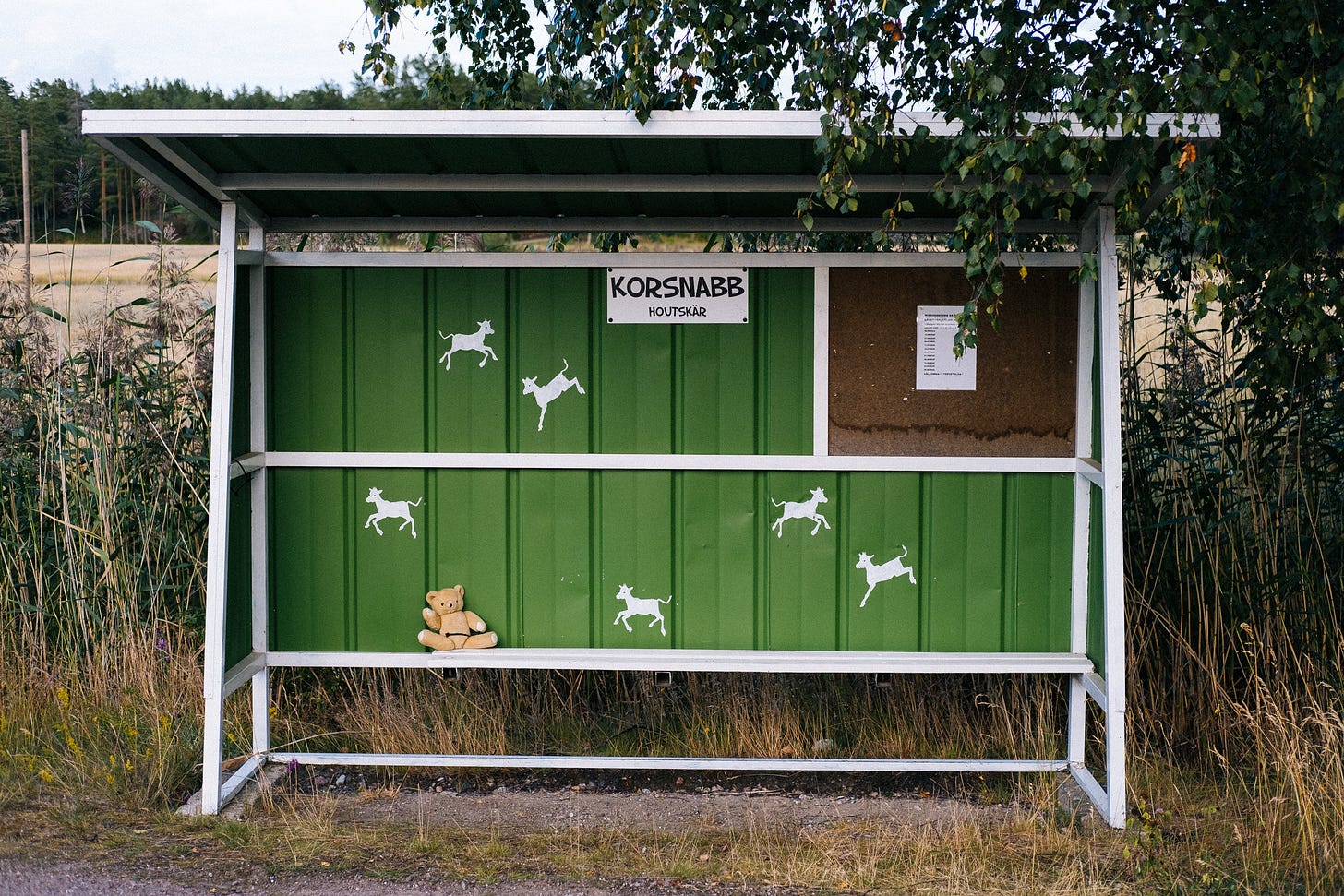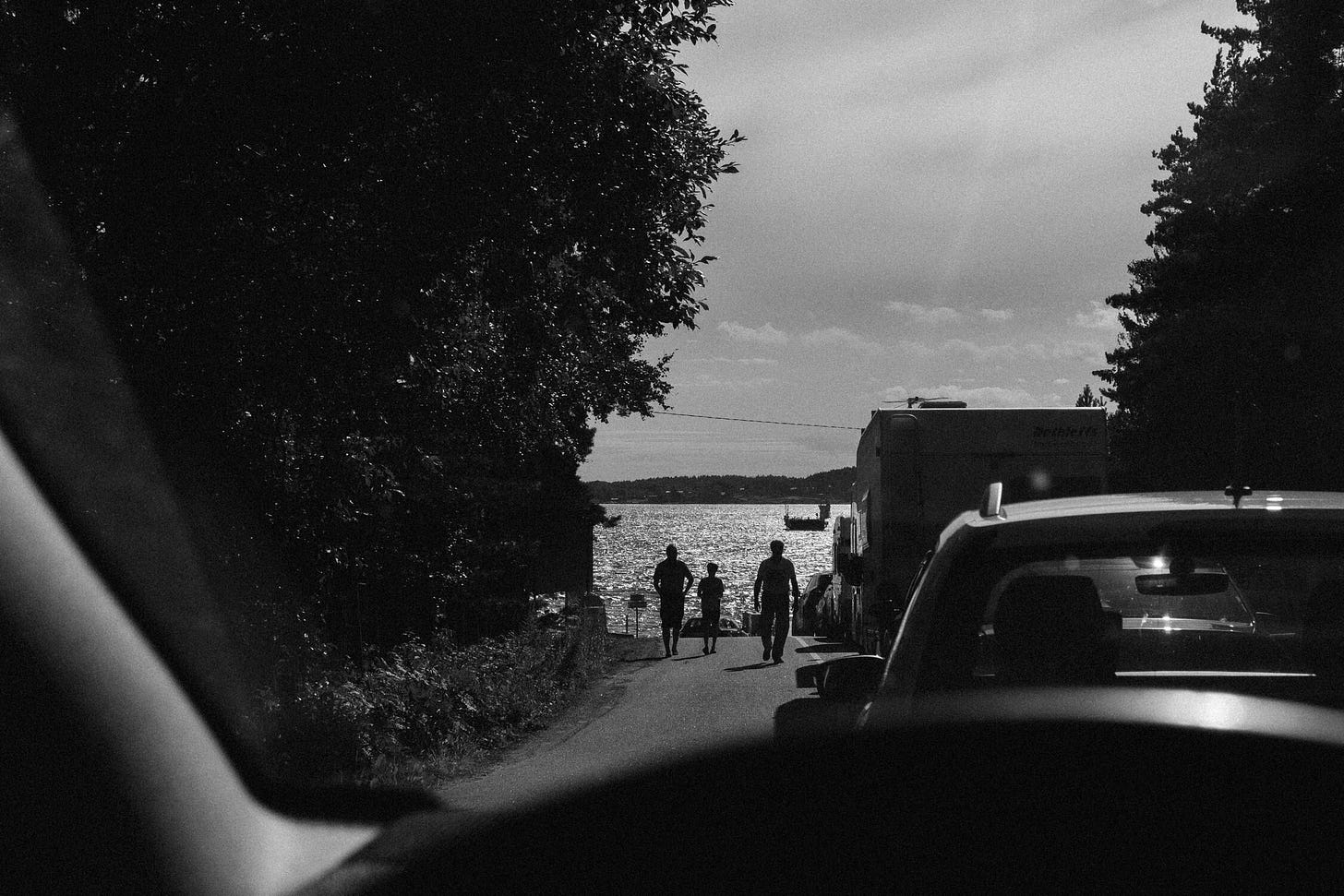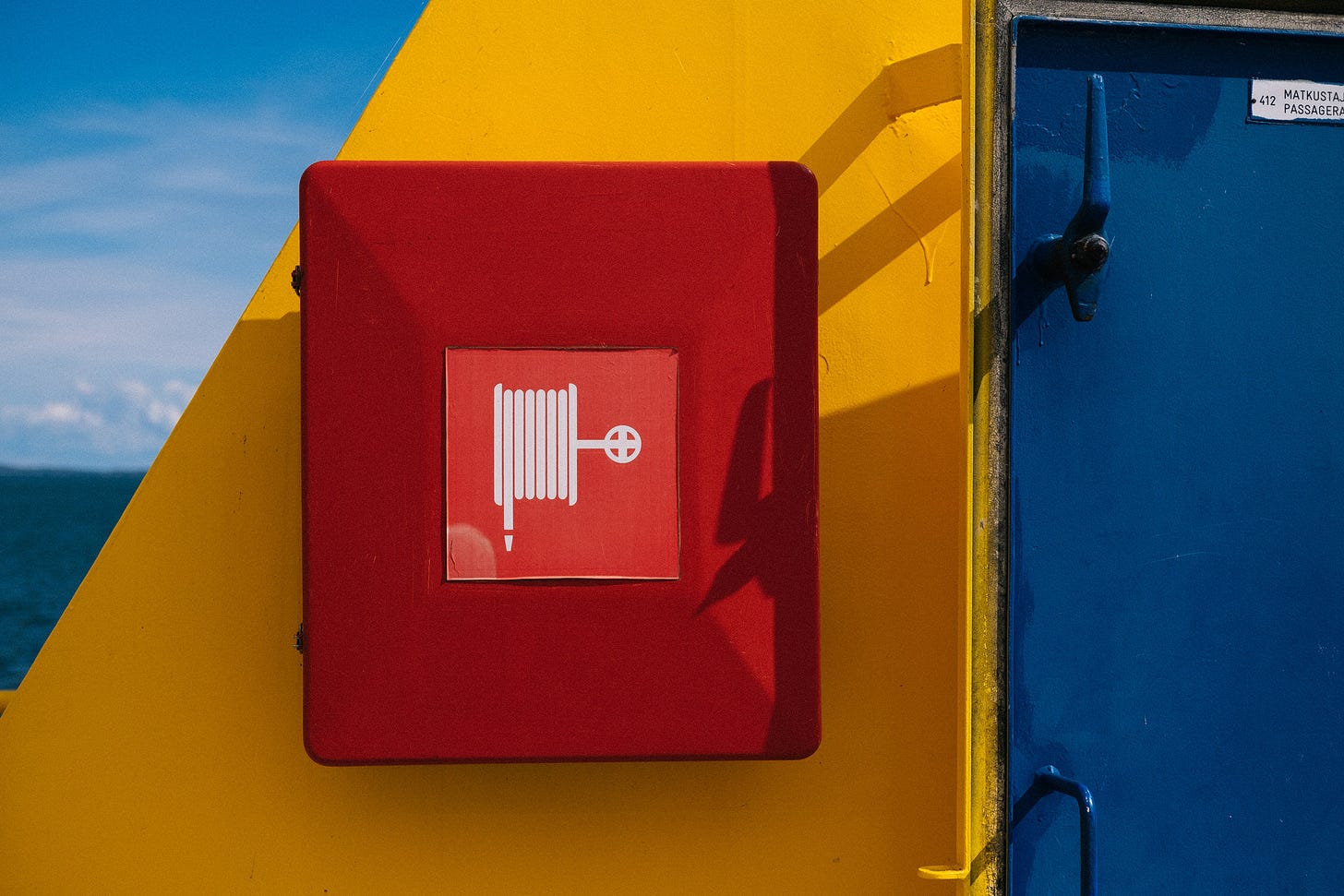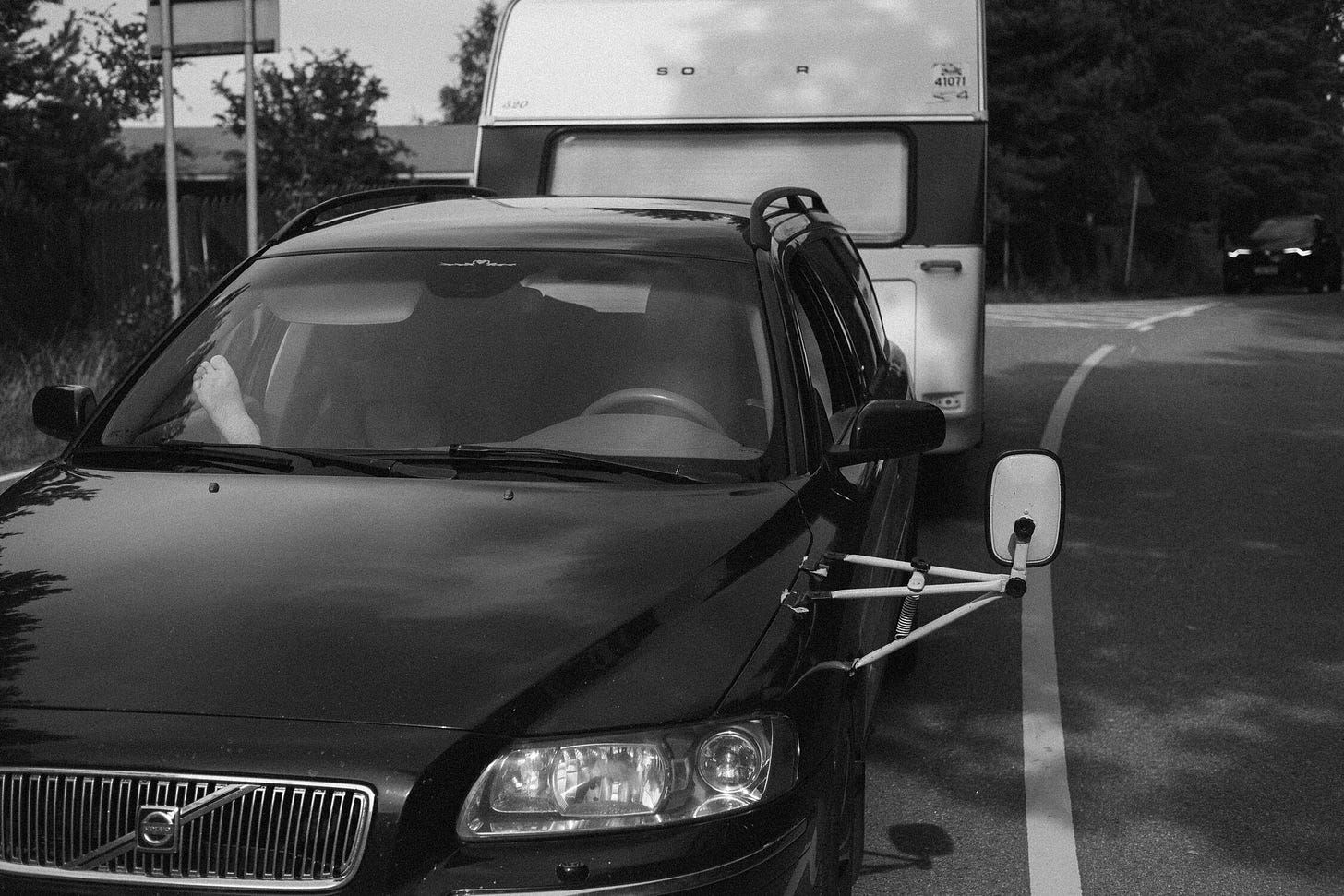There's no art without mediocre work
Great work begins with good enough. Also, some mediocre photography right here.
Dear, let’s talk about mediocrity.
I wrote this to remind myself, you, and that friend of yours who always feels inferior—even though they’re insanely good.
I’d love to hear your thoughts and experiences on this in the comments.
As always, your support means the world.
Cheers,
Nani
For my 🇫🇮 friends: Jos haluat tilata suomenkielisen blogikirjeeni Kaikki taivaan linnut, jossa kirjoitan Substackista (löydät täältä myös vuoden 24 suomenkieliset kk-raportit), valitse tämän sähköpostin lopusta Unsubscribe. Päädyt Substack-alustan asetuksiin, josta voit hallinnoida tilaustasi. Päädyt samaan paikkaan visiteeraamalla profiilikuvasi takaa löytyvissä asetuksissa.
You nail it because of mediocre work
Let’s be real. You don’t nail it by accident. It’s not just talent that takes you all the way. And certainly, you can’t give too much credit to your intuition.1
Nope.
You nail it because of mediocre work. Because you’ve practiced for years—then practiced some more. You’ve taken loads of shitty frames and plenty of okay ones. Written piles of crap, along with some good stuff, too.
You nail it through trial and error.
Art is born out of mediocre work
Nobody exhibits mediocre work.
As a photographer, my portfolio showcases the gems, and I certainly don’t go around shouting “Look at my mediocre work”. I don’t share all of my creative burden with you. I share some, but like any decent artist, I keep most of it to myself.
I’m writing this in case you need a reminder of your mediocrity. Most of the time, we are mediocre creatives—artists, even—doing mediocre work. And that’s exactly how it should be. There is no art without mediocre work.
Your art is born out of mediocre work.
Embrace mediocre work
Mediocre work is the practice. It’s the thousands of hours that crystallize into a moment where talent, hard work, and luck meet.
Talent might take us halfway, but mediocre work—the practice—takes us nearly all the way. Then luck pushes us over the finish line.
I get it—it’s hard to focus on producing mediocre work when the world is filled with everyone’s best work. Competitors and colleagues flood their feeds with highlights. If we see that work when we’re out of balance, we might fall into the comparison trap, making our own work feel like failure.
I encourage us to start each day by looking at our best work. Admire it. Pat yourself on the back. Then move forward. If you’ve created something great before, you can do it again.
The best work doesn’t happen by accident. It happens because of mediocre work. I guess “quantity over quality” applies here—just this once. The more you do it, the better you become.
Mediocre work is called a job
For working creatives, doing the mediocre work is the job.
When I left my day job in 2012, I was surprised by how many similarities there were between project management and running a photography business.
From the start, I loved being an entrepreneur. Working alone suits me. I could walk the dogs, run errands during the workday, and enjoy the freedom I craved.
But when I think about the actual job description, not much changed. I was still sitting at my computer all day, taking care of tasks and putting out fires.
I gained freedom but lost the security of a paycheck. My stakes were higher than ever. I couldn’t tell how much was enough, so I tried to give my all to each client.
I didn’t realize that was the biggest disservice I could do to my business.

Please, don’t give your all
Promising everything is impossible to sustain. Or worse:
“I’m going to give you my 110 %.”
Please don’t.
First, it’s just bad math. Second, when you give your all, you’re left with nothing. And if you’re left with nothing, there’s nothing left. Nothing to draw from, nothing at all.
Of course, I understand it’s just a saying. But too often, we obsess over work that’s already good enough
How about 70 %?
In my early years, I might have spent an hour editing a single photo—even though the client wouldn’t notice the difference I made in the past 50 minutes. We overwork our craft out of insecurity.
It’s easy to forget that as professionals, our 70% is our clients’ 100%. And on a bad day, even 50% can be enough.
“Oh, but maybe just this once,” we tell ourselves. And before we realize it, it’s a habit.
Professionals know when to stop. Deep down, we understand what’s good enough and that the version we send out is just one way to succeed.
The best way to fight insecurity? Do plenty of mediocre work. It’s also one of the best ways to learn and expand our comfort zones.

Paid bill is a good enough feedback
Being a professional means playing on a different level than your client. That’s why they hired you. They can’t reach your level.
What would happen if you gave 70 % instead of 100 % today?
Would you have more time for your art?
Would you go further?
Would you spend more time with your family?
Would you take better care of your mental and physical health?
If you’re one of the lucky ones who gets to pay your bills through creative work—or even better, high art—congratulations. You’re one of the rare ones. Take care of your talent and craft by doing more mediocre work.
In a way, a paid bill is the best feedback. Sure, it tastes better when it comes from something you truly loved doing. But if you took the job to pay your bills, that’s okay. (We all have been there.) You probably did mediocre work that brought you closer to your next gem.
I firmly believe this: If you focus on the work that’s not going to end up in your portfolio, you’ll end up with more material for your portfolio. Why? Because the more perspective you have on your craft, the easier your job becomes.

Mediocre work is the only way to mastery
The difference between an amateur and a professional isn’t the absence of mediocre work, but the willingness to push through it. Mediocre work is the necessary foundation of mastery.
Every piece of art people stand in line to see exists because of the thousands of mediocre attempts that came before it.
Unless we embrace mediocre work—the daily grind—we’ll never get there. If we put too much trust in talent or keep waiting for the perfect moment, we won’t move forward.
And moving forward is essential for our well-being as creatives. Staying still kills the groove.
Have you ever felt stuck in mediocrity while everyone else seems to be sprinting toward mastery? I know I have. But hear me out—we’re all on the same road. Some of us are just further along.
We need to stop fearing mediocrity. We need to show up, put in the hours, and trust that every frame, every word, every brushstroke is getting us closer to our best work. And when it happens? We need to stop and admire it.
Because in the end, the best work isn’t an accident.
It’s inevitable. Just like mediocrity.

But please, give some.











Good points!
Itse kirjoitin juuri kukoistuksesta sivuten samalla keskinkertaisuutta suhteessa nerouteen. Näinhän se on, että jos pelkää keskinkertaisuutta, ei voi kukoistaa. Ja nerouskin ehkä tulee näkyviin vain harjoittelun kautta ja sen, että uskaltaa tehdä keskinkertaista.
Good insight. I consider the majority of the images I get paid to take as being mediocre. When I'm creating product and lifestyle photography, the client wants consistency in lighting, composition, vibe, etc. Given the constraints, it's rare to produce something truly great. I'll try to capture the great ones on my own time. As long as the mediocre ones keep paying the bills, I'm fine with that.